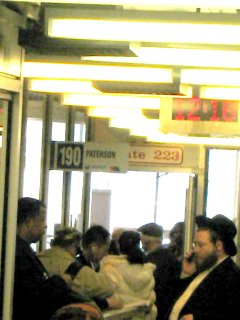Rigor of Beauty
 Book I of Paterson starts with what seems like an epigraph:
Book I of Paterson starts with what seems like an epigraph:“Rigor of beauty is the quest. But how will you find beauty when it is locked in the mind past all remonstrance” (3). But who is speaking this? As Lexi pointed out earlier, Paterson is a multivocal text. Yet Williams signals different voices with quotations only rarely. Strangely, the note to the text tells us that this is Williams himself speaking: “WCW’s own prose. On the 1945 KS galleys WCW cut two additional sentences that were also contained within the quotation marks: ‘It is not in the things nearest us unless transposed there by our employment? Make it free, then, by the art you have, to enter these starved and broken pieces’” (253). So, it is perhaps not an epigraph as much as it is an invitation, but it is still unclear why Williams would want to set it off like he does, since he does not use quotes normally in this way; is it merely to create a physical, graphic separation, to literally signify the “locked in the mind past all remonstrance”?
I’m hesitant to buy the explanation of pure graphism here. I still wonder about the way in which these quotes elicit the voice, especially in such a crucial place, the place of beginnings (however much a readerly desire for a beginning is thwarted by Williams), the place of “arma virumque cano” [“of arms and a man I sing”: Vergil]. A reply to the Greek and Latin with the bare hands would get rid of the arma (maybe replacing it with the silk factory or writing itself), but to a certain extent Williams gets rid of the virum and the cano too. What’s left? Que? I think there is definitely some singing left in the midst of the play of things, in the mist of the Passaic falls. After all, the famous line “no ideas but in things” is actually “say it: no ideas but in things.” Not that saying is singing, but saying might be enough of a song in the face of the brute materiality of Paterson (he mentions in his 1951 statement about the poem that it will only be with Book III that the poem will attain language; ironically, this is the book with the mute geological cross-section.)
So is it Williams that suppresses sound in his text or, as Garrett Stewart claims, is it the critics who have suppressed the phonotext of modernist poetry? Perhaps both. For Williams, the white noise of the falls overcomes sound and song, even as they emerge from its cosmogonic chaos. Whatever the song of Paterson is, it is not as easy to hear as in the other modernist epics, where “sounds cut in, rise, then fade away as other sounds intrude, as if we were tapping into a party line on a municipal phone exchange, spinning down a radio dial, or sampling a stack of records.” (Adelaide Morris)
If anything, the quotes here—as citations go—imply the already-said of past and memory. Whatever is said or sung of the “starved and broken pieces” to come is a function of the present-tense activity of reading (or singing, if you wish to interpret his concretisms lyrically.) The rest lacks citation as if—and this goes even for the archival passages—it hasn’t even been said yet.
Labels: Adelaide Morris, Book I, Book III, Garrett Stewart, no ideas but in things, rigor of beauty, the falls, Vergil





